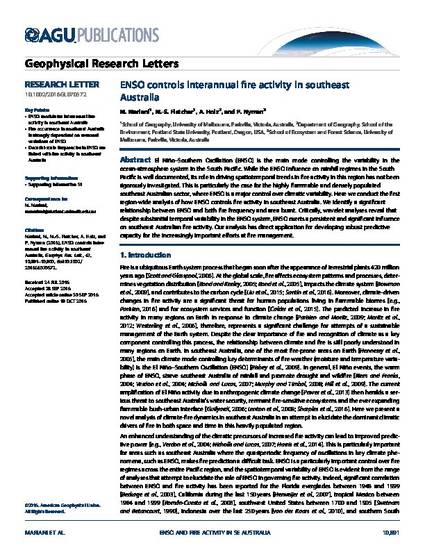
- El Niño Current -- Social aspects,
- Fire risk assessment,
- Precipitation (Meteorology),
- El Niño Current,
- Southern oscillation
El Niño–Southern Oscillation (ENSO) is the main mode controlling the variability in the ocean-atmosphere system in the South Pacific. While the ENSO influence on rainfall regimes in the South Pacific is well documented, its role in driving spatiotemporal trends in fire activity in this region has not been rigorously investigated. This is particularly the case for the highly flammable and densely populated southeast Australian sector, where ENSO is a major control over climatic variability. Here we conduct the first region-wide analysis of how ENSO controls fire activity in southeast Australia. We identify a significant relationship between ENSO and both fire frequency and area burnt. Critically, wavelet analyses reveal that despite substantial temporal variability in the ENSO system, ENSO exerts a persistent and significant influence on southeast Australian fire activity. Our analysis has direct application for developing robust predictive capacity for the increasingly important efforts at fire management.

Copyright 2016 American Geophysical Union. Reproduced here with permission.